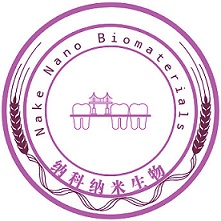 Hydroxyapatite (HA) is the most frequently used calcium phosphate-based biomaterials and it could be prepared from natural or synthesized sources via several processes.
Hydroxyapatite (HA) is the most frequently used calcium phosphate-based biomaterials and it could be prepared from natural or synthesized sources via several processes.
Hydroxyapatite is one of the most widely studied materials for healing in bone. It is a naturally occurring mineral, a component of bone, and a synthesized material with wide application in medicine. Hydroxyapatite can be easily made as a powder.
Hydroxyapatite, Ca10(PO4)6(OH)2, is a form of calcium phosphate which has been used, in particular, as a packing material for enzymes and proteins separations. The basis of separation is ionic interactions between amine groups of the enzymes and phosphate groups on the surface of the hydroxyapatite and, also, calcium coordination complex formation between calcium groups in the hydroxyapatite and carboxyl groups in enzymes. Low concentration phosphate buffers are used to elute acidic and neutral enzymes and high concentration buffers are used to elute basic enzymes.
A protein mixture containing transferrin, myoglobin, lysozyme, and cytochrome c was separated using hydroxyapatite as a support.
Nano-hydroxyapatite (nano-HAp) can effectively remineralize and repair tooth surface, also improves the antimicrobial properties and tooth sensitivity in oral applications.
Hydroxyapatite is a valuable resource that serves as an important agrochemical fertilizer
Hydroxyapatite is one of the most widely studied materials for healing in bone.
Protein and Peptide Separations
Smart and composite inorganic coatings obtained by sputtering
Hydroxyapatite contains two types of binding sites, positively charged calcium (Ca2+) and negatively charged phosphate (PO43-) groups. These sites are distributed into the crystal structure of the matrix. Cation exchange occurs by positively charged proteins with the negatively charged phosphates, and analogously, they are repulsed by the calcium sites.
Hydroxyapatite is the main mineral constituent of bones. Together with calcium phosphates it has been widely investigated in order to improve bone integration of implants. Due to the brittle nature and poor mechanical properties of these ceramics they have been mainly considered as coating on metallic substrates (usually Ti and its alloys).
Sputtering has been proposed for the deposition of hydroxyapatite coatings to overcome the main drawbacks of plasma spray coatings.
The main advantage of sputtering deposition of hydroxyapatite is the possibility of obtaining coatings with uniform thickness, dense, with high purity, and high adhesion to the substrate



